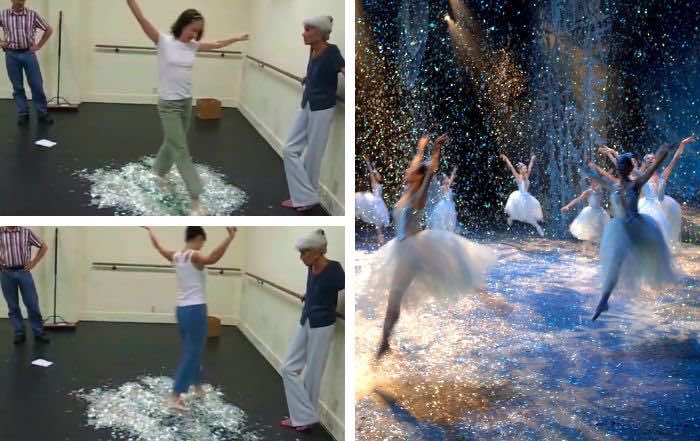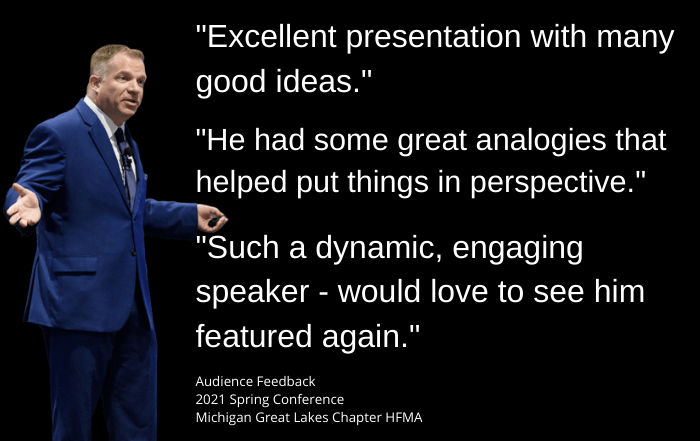 When it comes to teamwork tips for collaboration, a phrase that comes to mind is “fake snow.” Back when I ran the business operations for a professional ballet company, fake snow was a big deal.
When it comes to teamwork tips for collaboration, a phrase that comes to mind is “fake snow.” Back when I ran the business operations for a professional ballet company, fake snow was a big deal.
The substance was prominently featured in our production of The Nutcracker. The first acts end with a beautiful dance in a snowstorm. See the right side of the picture above for an idea of the spectacle.
We couldn’t use real snow, so a substitute had to found. The tricky part is that it needs to gracefully float down onto the stage, be highly reflective, and not cause the dancers to slip.
This final quality was essential, as a production will end very quickly if dancers are slipping and hurting their knees and ankles.
To find the right mix of beauty and safety, our Prop Master would collect various plastic strips and then audition them as snow.
In one of the rehearsal rooms, the various materials would be put on the floor in piles. A couple of ballerinas would then carefully dance through them. This is captured on the left side of the picture above.
From that performance, the Prop Master, the ballerinas, and the staff who oversaw the dancers would make a selection or look into other samples.
In your organization, while you may not need to put on a production, you can learn a lot, from fake snow, about how to collaborate with your colleagues:
Teamwork Tips for Collaboration: Equal Voices
With the fake snow, people from different department had their opinions heard. Opinions from those with less seniority weren’t discarded.
In your organization, when an important decision needs to be made, are all voices heard? Do those voices have a direct way to comment or are they filtered through a supervisor?
For instance, are you selecting software without input from the people who will use it? It’s a mistake to limit opinions based on seniority or paycheck size.
Teamwork Tips for Collaboration: The Main Goal
Beauty and safety were our goals with the fake snow. But of the two, safety was the top concern and the main goal. The dancers had to feel they could safely perform while a foreign substance was dropped onstage.
When you need to make a decision, do you understand the main goal? Is its importance spelled out and shared with others.
If this doesn’t happen, people may start to create their own main goals. For example, a misplaced focus on saving a few dollars could result in a purchase of much lower quality.
Can you imagine a four-star restaurant using paper plates? Yes, it’s cheaper but it would also lessen the dining experience.
Teamwork Tips for Collaboration: Repeatable Process
At the ballet, every year we would have to order new fake snow. There was no way we could store the amount we’d need to use for a dozen performances.
On an annual basis, we would repeat the audition process for the fake snow. Previously used products might no longer be in stock or a small change to the coating might make them unsafe.
In your organization, do you have an ongoing process for reviewing decisions and making adjustments when necessary?
Thinking the first decision is the only decision can become a limiting belief that sees people handcuffed with old processes, outdated software, or equipment.
Consider, when you make a decision, to set up a date when the decision will be reviewed. While big changes may impossible, important adjustments may be achievable.






